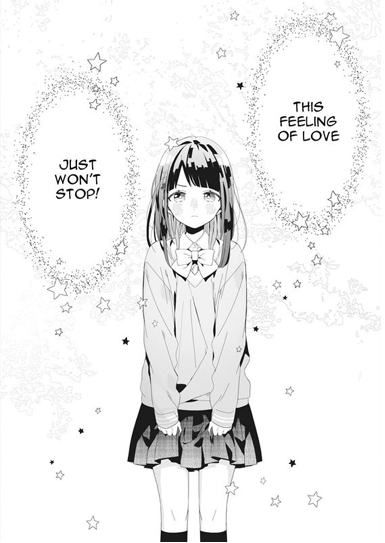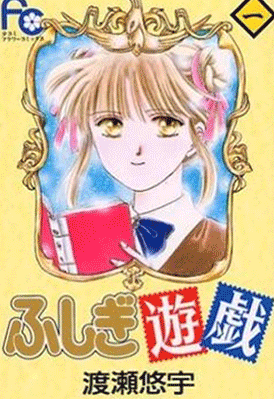Otome Isekai
Otome Isekai, or OI, is a genre of fiction. Over the past decade, it's popularity has exploded as a genre of manga, manhwa, manhua, and even webnovels! The name is made up of two japanese words, 'otome' meaning maiden, and 'isekai' meaning different world. Lets break those down.
Otome
 'Maiden' is a bit of a loaded word in english, and for that reason it's important that otome translates to 'maiden' rather than 'young woman'. The etymology of 'maiden' is from the old english mægden/mæden meaning unmarried woman (usually young); virgin; girl; maidservant, that kind of thing. The emphasis is on the inexperience. This is largely the same as the Shoujo genre, but there is a distinct difference in time vs place.
'Maiden' is a bit of a loaded word in english, and for that reason it's important that otome translates to 'maiden' rather than 'young woman'. The etymology of 'maiden' is from the old english mægden/mæden meaning unmarried woman (usually young); virgin; girl; maidservant, that kind of thing. The emphasis is on the inexperience. This is largely the same as the Shoujo genre, but there is a distinct difference in time vs place.
The shoujo genre is focused on romance, the fluttery feeling in your chest, and sparkles. Lots and lots of sparkles. There's crying, theres blushing, there's doki doki! Generally, Shoujo Manga is about modern girls navigating a new and confusing time in their lives, whereas Otome Isekai is simply about being a young woman in a new and confusing place. That place is generally a completely different reality than the young woman is used to. We'll explore what kind of realities that may be later.
Calling it 'otome isekai' rather than 'shoujo isekai' isn't only because of semantics, there's also the influence of "otome games". These are visual novels that are 'made for girls', as opposed to 'bishoujo games' which are 'made for boys'. Both of them, however, are mainly about playing through a storyline where the goal is to capture the heart of a character. Many (if not most) video-game type OI are based on this concept, resulting in love-polyhedrons and the classic harem ending. Because the first modern otome isekai works were based on these games, the genre was henceforth named after them.
Isekai
Isekai means "different world". The basics are simple: someone from one world is suddenly transported to another one. It's the single most popular genre in comics right now, and has been for quite some time! The storytelling concept of isekai is probably older than written word itself, but the first documented japanese literature of a person traveling to different world was evidently Urashima Tarō. Then there's the first 'anime original' isekai, which from what I can find seems to be Paul in Fantasy Island, which aired in 1976! The concept of 'falling into a video game I've played" seems to have first appeared in NG Knight Ramune & 40, which first aired in 1990. there's also the concept of 'reverse isekai', or someone from a different world falling into our world, which appears to be Sally the Witch, which first aired in 1966! That's older than my mother!
But by far, the one title that is considered the grandfather of modern isekai is 2012's Mushoku Tensei: Jobless Reincarnation. The tropes inherent in modern isekai were initially popularized through this title, such as 'truck-kun' killing someone and an apologetic god reincarnating them, intricate magic systems that end up with the protagonist being completely overpowered for the setting, fantasy harems of elf-wife and human-wife together, a flawed or even horrible protagonist personality, and most especially the steady character growth and development stemming from the experiences gained in this new world, resulting in the flawed protagonist maturing as a person. For better or for worse, the success of this light novel series resulted in the explosion of the isekai genre, leading to even more classics and newly established tropes.
Origins and Tropes
 The "first otome isekai" is about as straightforward as the "first isekai". Was it 1991's Fushigi Yugi, the first isekai in the shoujo genre? Was it 2013's You are my Dolce, the first appearance of an otome isekai webnovel which established the genre's most prevalant tropes? Was it 2014's Bakarina, the webnovel that suddenly popularized and adapted the genre through comedy, subversion, and period-piece dramatics?
The "first otome isekai" is about as straightforward as the "first isekai". Was it 1991's Fushigi Yugi, the first isekai in the shoujo genre? Was it 2013's You are my Dolce, the first appearance of an otome isekai webnovel which established the genre's most prevalant tropes? Was it 2014's Bakarina, the webnovel that suddenly popularized and adapted the genre through comedy, subversion, and period-piece dramatics?
Everyone has a different opinion on what constitutes otome isekai in the early days(I have gotten into screaming matches about whether Inuyasha is isekai(it is)), so there's no real consensus. After all, it's not like there's a dedicated school of study about this genre lmao. (@ prestigious literature programs: I am available to fill this niche)
It's not only 'getting hit by a truck and smacked into another dimension' though, Otome Isekai can apply to many different forms of existence and provenance. The most common one being 'transmigration', or realizing you're inside of a piece of media like a book or a video game. Others include 'reincarnation'--being reborn with your memories intact, 'possession'--suddenly recalling memories of a modern-age past life, and 'regression'--falling backwards in time with your memories intact. There are cases where an OI protagonist can be both transmigrated, possessed, and regressed all at the same time!
The main tropes of Otome Isekai include, but certainly are not limited to:
 Villainess/Duke's Daughter - FL is in the body of a bad person with lots of power.
Villainess/Duke's Daughter - FL is in the body of a bad person with lots of power.
 Evil Original Female Lead - OGFL is actually a bad guy!
Evil Original Female Lead - OGFL is actually a bad guy!
 Child Arc - We begin the story with a protagonist under age 14
Child Arc - We begin the story with a protagonist under age 14
 Cold Duke of the Frozen North - feat. black hair and red eyes
Cold Duke of the Frozen North - feat. black hair and red eyes
 Maid Abuse - These servants get SCHLAPPED
Maid Abuse - These servants get SCHLAPPED
 Runaway Fiancee - "I must break off this engagement!"
Runaway Fiancee - "I must break off this engagement!"
 Male Lead is a Tyrant - And yet he usualy isn't.
Male Lead is a Tyrant - And yet he usualy isn't.
 Pitiful, Abused, Neglected FL - Usually sympathybait.
Pitiful, Abused, Neglected FL - Usually sympathybait.
 Girlboss McEdison - FL 'invents' a billion modern things.
Girlboss McEdison - FL 'invents' a billion modern things.
I am currently working on a dataset of many Otome Isekai titles and categorizing them by those and many (many...) other factors. Once I figure out how to create data analysis visualizations its over for you hoes I hope to learn more data analysis skills and maybe break into the industry.
